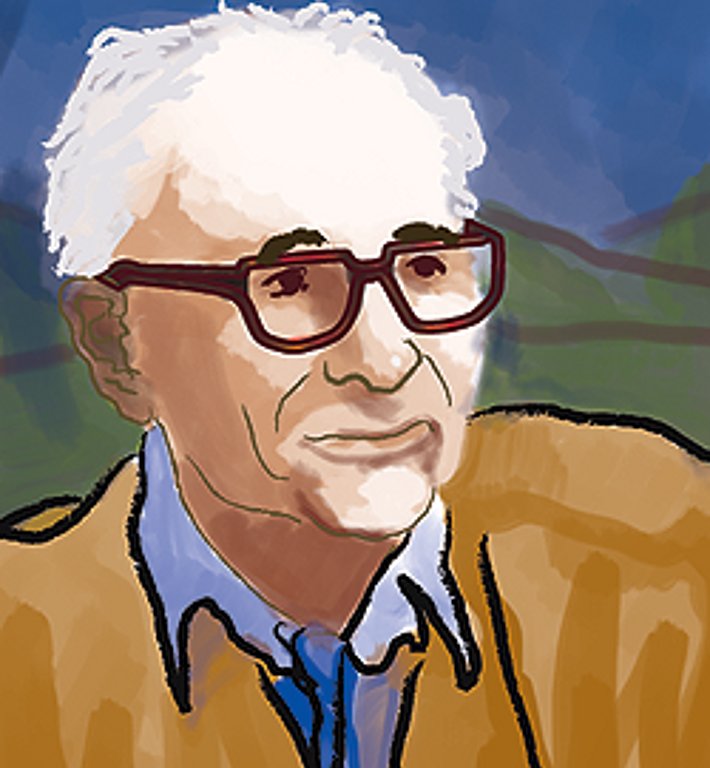Claude Levi-Strauss

Claude Levi-Strauss (1908-2009) is one of France’s foremost thinkers of the 20th century. The celebrated philosopher and anthropologist is one of the key figures of structuralism and is along with Franz Boas and James George Frazer often referred to as the “father of modern anthropology” as he dramatically changed the Western perception of culture and civilisation.
Early Life
Levi-Strauss was born in Brussels, Belgium, in 1908. He grew up in France and was educated in Paris. After attending the Lycee Janson de Sailly and the Lycee Condorcet, he continued education at the Sorbonne in Paris where he studied philosophy and law. However, he soon gave up the latter and focused on philosophy. After graduating from philosophy in 1931, he taught at secondary school until 1935 when he took part of a French cultural mission to Brazil. At the Sao Paulo University, he became a visiting professor of sociology, while his wife Dina was a visiting professor of ethnology. Besides teaching sociology, Levi-Strauss also made several trips to the Amazon jungle where he lived and studied the native tribes.
Emigration to New York
After the outbreak of the Second World War, Levi-Strauss returned to France and took up arms. After France’s capitulation in 1941, he left the country. He went to Martinique from where he emigrated to New York City. There, he taught at the New School for Social Research and at the Ecole Libre des Hautes Etudes which he co-founded with other French emigrates in New York including Henri Focillon, Jacques Maritain and Roman Jacobson. Levi-Strauss returned to Paris in 1948 to receive doctorate from the Sorbonne. One year later, he published his first notable work – The Elementary Structures of Kinship that soon became one of the most important works in anthropology.
Rise to Prominence
Although Levi-Strauss was well established among the academic circles by the mid-1950s, he rose to international prominence after he published Tristes Tropiques (A World on the Wane) in 1961. This partly philosophical and partly biographical account of his trips and life with the South American Indian tribes, and his next masterpiece – La Pensee Sauvage (The Savage Mind) that was published one year later laid the foundation for modern anthropology as well as Western understanding of culture and civilisation. In the later half of the 1960s, Levi-Strauss focused on a four-volume study, the Mythologiques which was finally published in 1971.
Honours
For his contribution to the 20th century thought and above all, anthropology, Levi-Strauss was honoured by many world’s prestigious universities. In 1959, he became the chair of Social Anthropology at the College de France (he hold the post until 1982) and in 1973, he became a member of the Academie Francaise. He was also awarded honorary doctorate degrees from universities such as Harvard, Yale, Oxford and Columbia, memberships in academic institutions such as the National Academy of Sciences, the American Philosophical Society and many others. In 1973, Levi-Strauss also received the Erasmus Prize that is awarded by the Dutch Praemium Erasmianum Foundation for notable contributions to European culture, society or social science. Other Levi-Strauss’ awards and honour include the Grand-croix de la Legion d’honneur, the Commandeur des Arts et des Lettres and the Meister-Eckhart-Prize, to mention only a few.
Later Life and Death
Levi-Strauss remained active after his retirement and continued to publish works on a variety of topics nearly until his death. He died in 2009, only a few weeks before his 101st birthday.
Main Ideas and Concepts
Claude Levi-Strauss is best known for his theory of culture and mind that revolutionised modern anthropology. He showed that culture is a system with underlying structures that are common to all societies regardless of their differences. Through his analyses he showed that patterns of structures including behaviour and thought are universal to all societies, and rejected the concept of primitive and modern mind, arguing that all men have the same intellectual potential. According to Levi-Strauss, all people think of the world around them in terms of binary opposites such as up and down, life and death, etc. and therefore every culture can be understood in these terms.
Levi-Strauss’ ideas were heavily influenced by the so-called structural linguistics, especially the work of the Swiss linguist Ferdinand de Saussure (1857-1913). His works, however, also reveal the influence of Roman Jacobson and Franz Boas, both of whom he met in New York City. Other notable influences include Emile Durkheim (1858-1917) and Marcel Mauss (1872-1950).
Notable Works
Levi-Strauss published his first work Gracchus Babeuf et le communisme as early as 1926 but his most notable works were published only from the late 1940s to the early 1990s. The most important works by Claude Levi-Strauss include:
- La Vie familiale et sociale des Indiens Nambikwara (1948)
- Les Structures élémentaires de la parenté (“The Elementary Structures of Kinship”; 1949)
- Tristes Tropiques (“A World on the Wane”; 1955)
- Anthropologie structurale (“Structural Anthropology”; 1958)
- Le Totemisme aujourdhui (“Totemism”, 1962)
- La Pensee sauvage (“The Savage Mind”; 1962)
- Mythologiques I-IV (1964-1971)
- Anthropologie structurale deux (“Structural Anthropology, Vol. II”; 1973)
- La Voie des masques (“The Way of the Masks”; 1972)
- Myth and Meaning (1978)
- Paroles donnés (“Anthropology and Myth: Lectures, 1951-1982”; 1984)
- Le Regard éloigné (“The View from Afar”; 1983)
- La Potière jalouse (“The Jealous Potter”; 1985)
- Histoire de Lynx (“The Story of Lynx”; 1991)